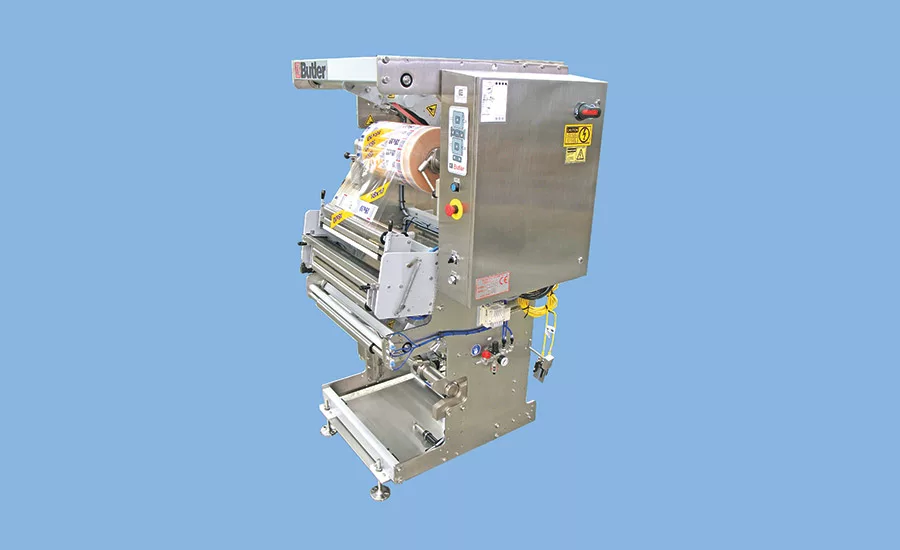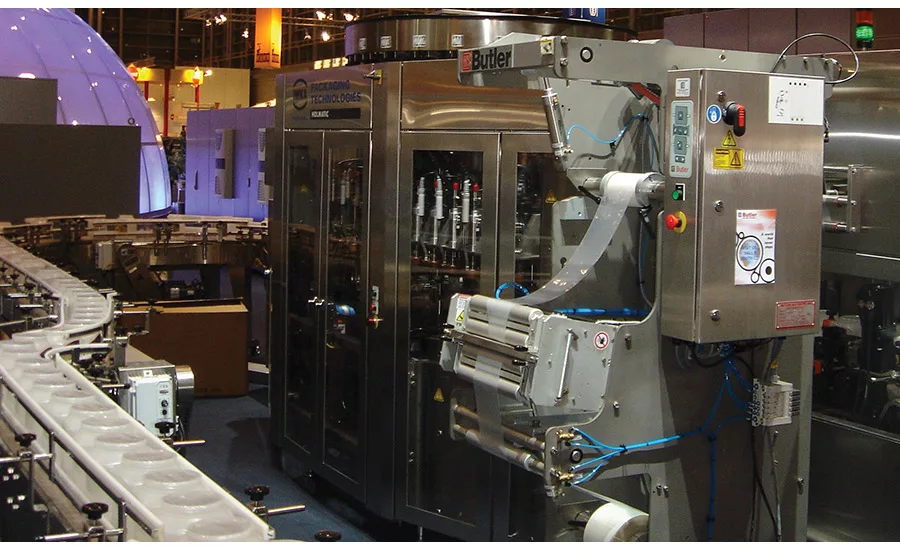Increasing Production Marketing, Uptime and Throughput in Packaging Applications
Automatic splicing machines can ultimately provide greater line profitability.


Downtime—both planned and unplanned—can have a pronounced impact on packing line efficiency and throughput. This downtime, caused by film roll changes, registration errors, catastrophic film failures, bottlenecks, and more, is costly and may seem impossible to avoid. Taking appropriate steps to streamline processes wherever possible can help to mitigate the repercussions of downtime, improving overall line efficiency and thus profitability.
Common Causes of Downtime in Packaging Lines
According to line efficiency studies, the single greatest cause of downtime in packaging lines is the time it takes to change over rolls of packaging film as they expire. Operators often estimate that each packaging web roll changeover and splice to the previous roll takes about 1-2 min, a great deal of time when the number of roll changes per day is considered. These estimates are quite low, however; measured downtime runs closer to an average of 3-5 min per roll change. If, in a conservative estimate, a company continuously running a single packaging line must change film rolls 10 times per day, the line loses an average of at least 30 min of production per day, or more than 8,000 min each year. Taking into account a similarly conservative estimate of 80 packages per minute and a $0.50 profit per item, the decreased throughput accounts for hundreds of thousands of dollars in potential profits lost per year.
Other causes of downtime in packaging lines also relate to film splicing. Improperly spliced film, for example, can lead to weak splices and splice failure during production. When the splice separates, or a weak spot in the film itself causes it to fail, the line must be shut down until the web path is rethreaded. This can take anywhere from 20 min to an hour in most applications, or two hours or more in aseptic applications where operators must re-sterilize machinery before restarting the line. Most packaging lines experience these kinds of critical failures about once a week.
Poor splices can also lead to registration errors in the film, where the film is improperly aligned and defective packages result. The registration error may result in barcoding issues, faulty seals, and/or package aesthetics that are simply unacceptable for consumer goods. While these errors don’t cause downtime, they can cause a great deal of waste and rework, thereby significantly decreasing line throughput and efficiency.
Bottlenecks are the final main cause of line downtime and inefficiency. Bottlenecks represent a significant loss of potential throughput, given that the throughput of a packaging line is only maximized when there are no slow spots in the line that have to be compensated for by slowing or stopping the upstream parts of the line. If one stage of a packaging line can handle 1,000 packages per minute, but the following stage can only handle 800, packages will accumulate between the two until the maximum accumulation is reached, at which point the first stage will have to be stopped or slowed until the excess packages are processed. Maximized throughput is critical to line efficiency and to maximizing profits, and so identifying and reducing bottlenecks are critical as well.
Increasing Efficiency
For packaging line operators and managers looking to increase line efficiency and throughput by minimizing downtime, gathering accurate information about their packaging line is the first step. By committing to the measurement of the numerical performance of the line, operators can analyze the performance of the line and note where improvements can occur. Measuring and tracking performance can help to improve performance, especially when people on the factory floor are engaged in the process. Employees who are encouraged to benchmark and objectively analyze their performance, as well as that of the line, become energized to find ways to create efficiencies. In this way, a culture of measuring and gauging emerges, to the benefit of the entire operation.
Measurement is also the best way to find efficiencies where bottlenecks are concerned. With accurate data about processing speeds at each stage and accumulation point sizes, plant operators can determine where bottlenecks occur and how strategic changes or investments can reduce these bottlenecks and increase throughput.
Beyond measuring, specific changes to manufacturing practices can create efficiencies and increase throughput. Given that three major causes of downtime in packaging lines relate to film splicing, it is clear that using a system that more efficiently carries out high-quality, accurate splices will significantly reduce downtime and increase profitability. Automatic splicing technology* addresses these concerns and significantly reduces downtime. With this technology, the amount of time it takes to make a splice is greatly reduced and the accuracy of that splice is improved. Most importantly, however, the machines store a length of packaging film to use during the execution of the splice, so the production line runs continuously during splicing.
The issue of potential profit lost due to roll change downtime is no longer relevant when that downtime is eliminated. Catastrophic film failures become much less likely when automatic splicing is used due to the greater accuracy and quality of splices, as do registration errors. In addition, the reduced time spent on each splice often means that fewer operators are needed to manage the task, thereby reducing labor costs. Film waste and the associated cost of lost packages on each roll is also reduced, as the machines are able to automatically sense the expiring roll, which leads to splices far closer to the end of the roll.
Impact of Efficient Operation
By increasing productivity and efficiency with these techniques, plant operators are increasing the profitability of the business. When line efficiency is maximized, each package is able to absorb more of the plant overhead. The existing capital structure can be used to fulfill more customer orders at what is ultimately a lower unit cost. Implementing automatic splicing machines or machinery to eliminate a single bottleneck point in the line can ultimately lead to even greater line profitability.
For more information, visit www.butlerautomatic.com.
*Invented by Butler Automatic and in use around the world.
Looking for a reprint of this article?
From high-res PDFs to custom plaques, order your copy today!







